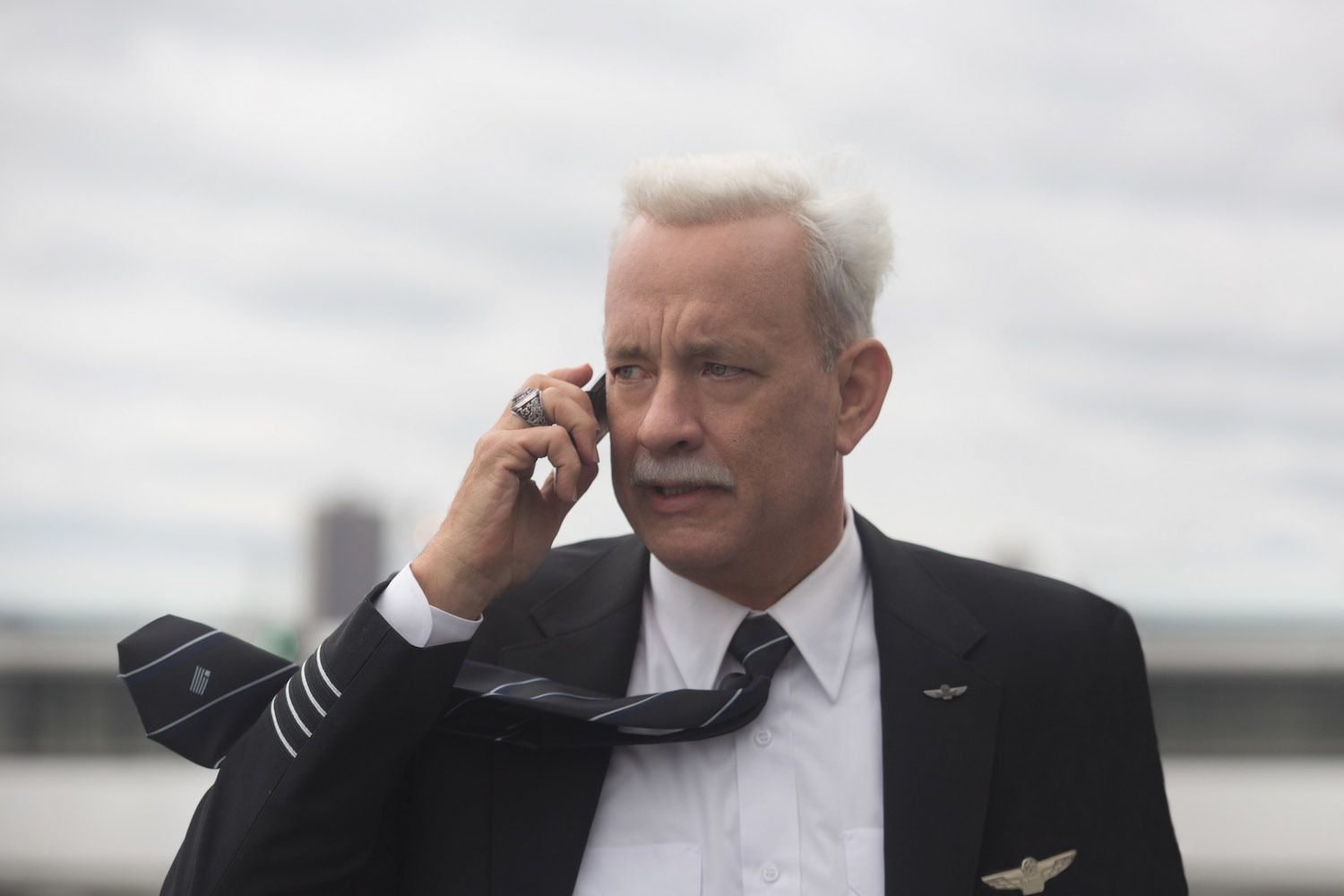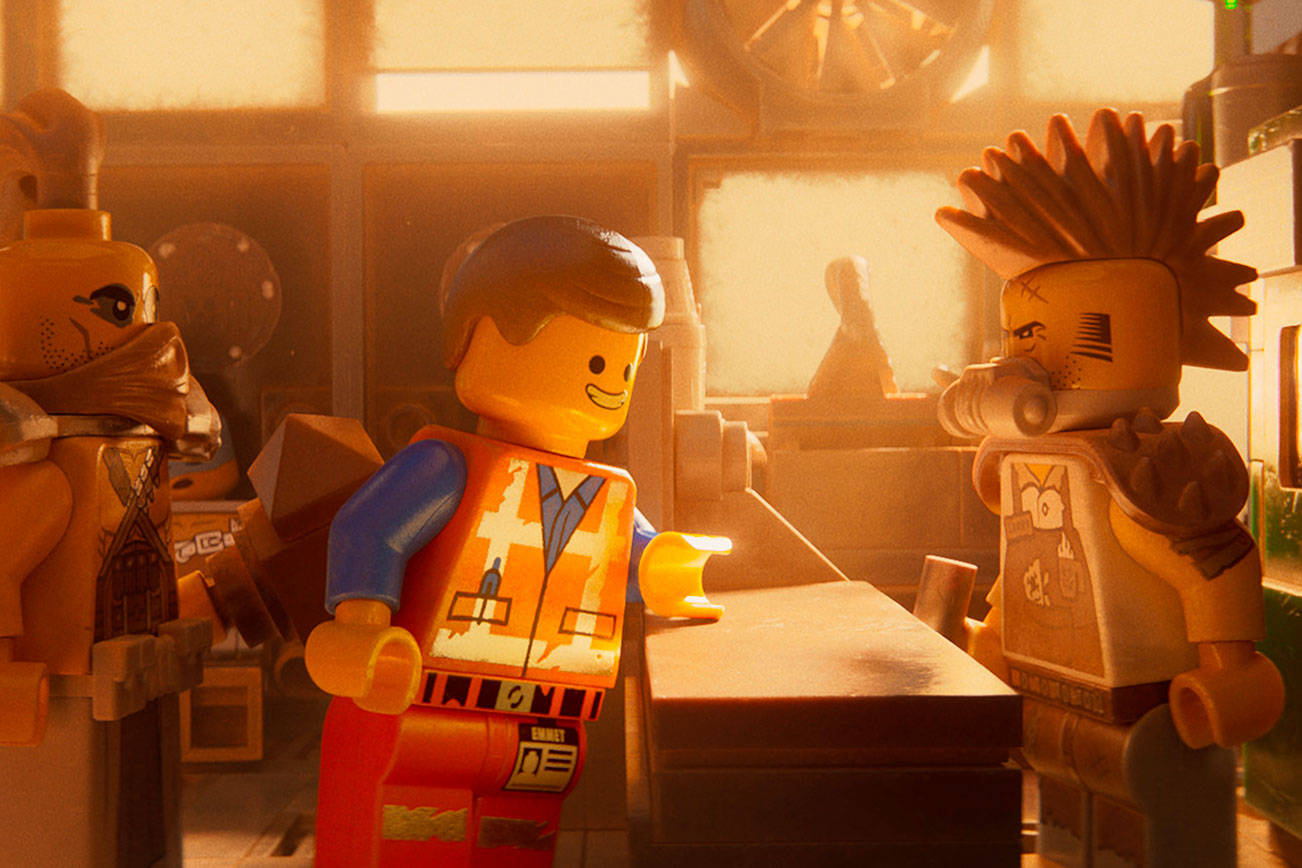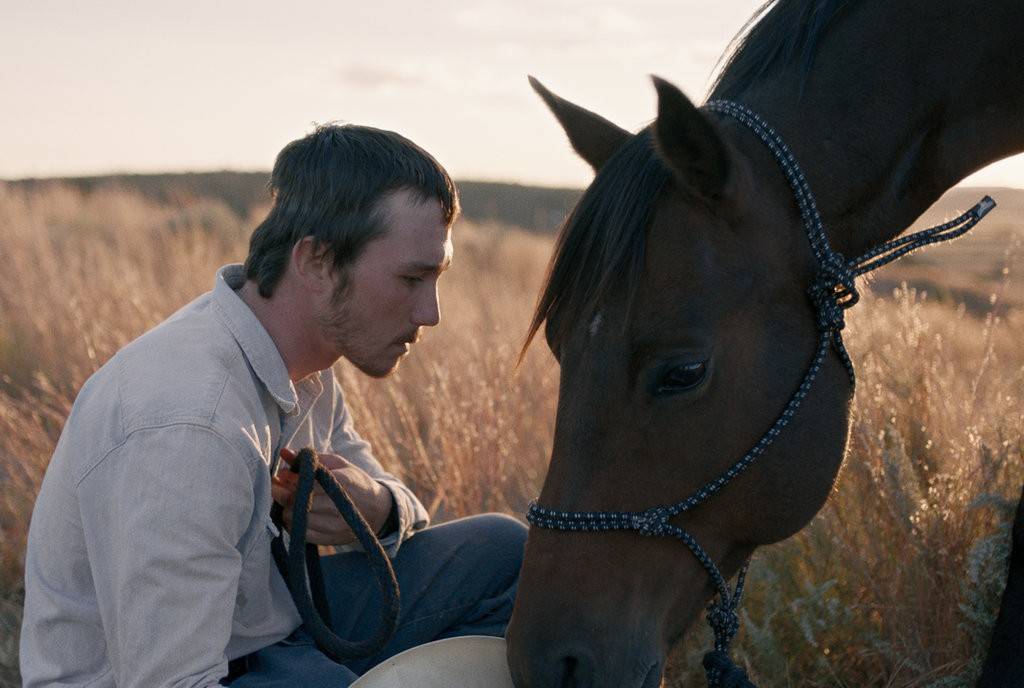The opening sequence of Sully is a nightmare: a damaged airplane crashes in New York City. The dreamer wakes and sits up in bed, panting in the dark. He turns his head slightly, and his eyes are softly illuminated by a little band of light. This is an old-movie technique that goes back to the silent days; it’s as simple as it is effective.
The old-fashioned touch indicates the preferred method of director Clint Eastwood, who has crafted an admirably trim, plain film out of a very square subject. Because Sully chronicles the 2009 Hudson River landing executed by US Airways pilot Chesley “Sully” Sullenberger (played by a white-haired Tom Hanks), the film requires one big sequence of digital spectacle: the six minutes of flying that took Sullenberger’s passenger jet from LaGuardia Airport to the surface of the Hudson on a freezing January day. (Two minutes into the flight, the plane’s engines were disabled by contact with a flock of geese.) But the majority of the movie is utterly unadorned—mostly shots of people walking and talking in nondescript hotels and generic conference rooms.
Given that Sullenberger came out of the episode a national hero, there wouldn’t seem to be a great deal of dramatic weight to a movie about the flight, except for those six minutes. Sully, however, finds a reason for being, and it turns out it’s smack-dab in Eastwood’s wheelhouse. Sully is about just one thing: how experience, expertise, and human judgment trump committee reports or computerized projections. This argument comes into play because of the investigation that immediately follows the water landing (not a “crash,” as Sullenberger hastens to note). Even as the press is playing up the “Miracle on the Hudson” and Sully is doing the Letterman show, the top brass must determine whether the pilot’s decisions were correct.
After all, computer simulations suggest that the plane might have been able to make it back to LaGuardia. “They’re wrong,” says Sully, without hesitation. “They weren’t there.” As to whether he calculated all the variables and parameters during the 30 seconds or so he had to make an irrevocable decision, Sully says, “I eyeballed it.” I don’t know whether the real Sullenberger used these words during the inquiry, but Hanks makes you wish he had. The performance makes a useful contrast with Hanks’ other besieged pilot, the title role of the hijacking movie Captain Phillips: instead of the superbly conveyed breakdown Hanks goes through at the end of that film, Captain Sullenberger remains calm—frankly dull—throughout, his post-traumatic response limited to that opening nightmare.
But that’s what this movie is saying: Sully never loses his cool because a guy who could land a passenger jet on a river doesn’t. The movie’s climax is Sully turning to co-pilot Jeff Skiles (Aaron Eckhart) and forthrightly saying, “We did our job,” which may not sound like much, but which in context is stirring. Sully is simple but laser-focused, and it’s hard not to read Eastwood’s interest as autobiographical, given his reputation as a no-nonsense professional who runs his movie sets without tantrums or budget overruns—a style easily relatable to his minimalist acting, too. As for his recent political pronouncements, he remains a wiser moviemaker than libertarian pundit.
The emotional register is spare, except for what Hanks allows in. Sully’s wife Lorraine (Laura Linney) is seen almost entirely with a phone to her ear, a continent apart from her husband in California. The sets are so bland the scenes might all have been shot in the Marriott where Sully stays; nothing distracts us from the central question. The film has an intriguing structure and the plane sequence is actually depicted twice—we don’t see it until the halfway point. It’s a nail-biting sequence, precisely rendered, and includes the swift reactions of rescue boats nearby. Why show the water landing a second time? In plot terms, it’s so the investigators—led by a trio played by Mike O’Malley, Anna Gunn, and Jamie Sheridan—can listen for clues. The viewer, however, has already gone through this, so we watch it this time without drama, without suspense. We can sit back and coolly appreciate pure, uncluttered professionalism. The way Clint Eastwood wants us to. Sully, Rated PG-13, Opens Fri., Sept. 9 in various theatres.
film@seattleweekly.com







